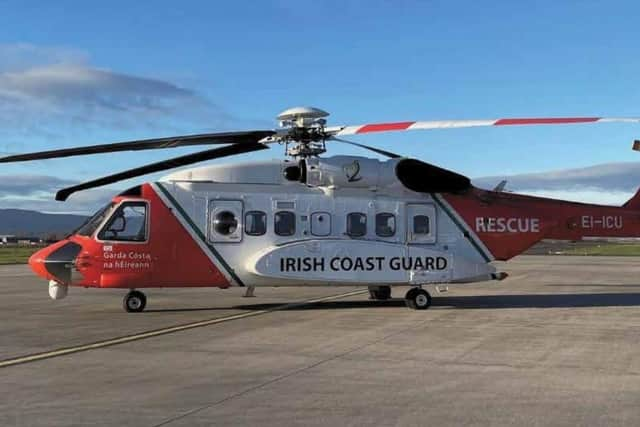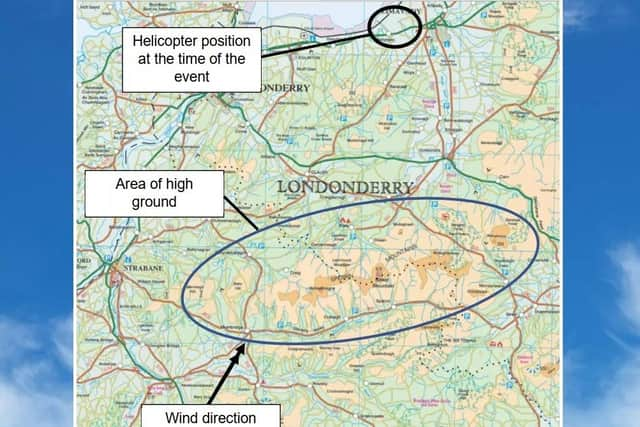Rescue helicopter experienced dangerous speed surge taking it to over 200mph near Limavady – investigators put incident down to phenomenon called 'mountain waves'
and live on Freeview channel 276
The craft was being flown by the Irish Coast Guard on a simulated search-and-rescue mission, which was meant to see it rendezvous with a lifeboat at Portrush.
Instead it encountered bizarre-sounding phenomenon called "mountain waves" which pushed its speed past 200mph – beyond the aircraft's maximum safe limit – and forced it to land.
Advertisement
Hide AdAdvertisement
Hide AdOn the surface, the phenomenon appears all the more strange due to the fact the helicopter was quite some distance away from mountains at the time.


The details are contained in a report by the Air Accident Investigation Branch (AAIB).
The incident itself took place last February and the report was actually published six months ago, but has not been widely reported on; the News Letter only came across it by chance.
The helicopter was a 16-year-old Sikorsky S-92A EI-ICU piloted by a 47-year-old commander, with three other crew on board.
Advertisement
Hide AdAdvertisement
Hide AdIt was based in Sligo and had flown north for the training exercise. It was a clear day.


"Moderate turbulence" was expected on the north coast but shortly before 3pm "the helicopter encountered unexpected severe turbulence approximately five nautical miles east-northeast of the City of Derry Airport" while flying at slightly over 2,000 ft high and travelling at just under 150 knots (about 170mph) – slightly below its maximum speed.
The AAIB report says the helicopter pitched up, pitched down, and began to accelerate.
As a result, the speed hit 175 knots (201.4mph), past its "never exceed" speed of 165 knots (189.8mph).
Advertisement
Hide AdAdvertisement
Hide AdThis caused an alarm to go off, before the pilot managed to bring the speed down to 100 knots (115mph) and increase the clearance from the ground.
Next, "all crew members felt a noticeable increase in airframe vibration".
The pilot decided to divert to City of Derry Airport, where the aircraft landed safely.
The AAIB investigation found that the likely culprit was "mountain waves".
Advertisement
Hide AdAdvertisement
Hide AdAt the time of the incident, the craft was just on the outskirts of Limavady and the nearest mountain range, the Sperrins, was about 10 miles to the south.
Mountain waves occur when wind is blowing over mountains, creating pockets of spinning air on the plain on the other side of the peaks.
The US National Weather Service says this: "The formation of mountain waves is similar to when fast-moving water flows over a large boulder in a river.
"As the river current flows over the stationary boulder, waves are formed downstream of the boulder.
Advertisement
Hide AdAdvertisement
Hide Ad"The atmosphere behaves in a similar fashion when the wind flow encounters a large mountain range (a stationary object) with a stable air mass in place."
Upon landing, "inspection of the helicopter after the event resulted in the identification of some defects which were rectified by the replacement of components".
The crew were uninjured, and the helicopter returned to service two days after the event flight.
In 2017, an Irish Coast Guard helicopter of the same model went missing shortly after midnight while flying over the Atlantic Ocean off the Co Mayo coast, killing all four people on board.
A report found that the craft had clipped a tiny island outcrop called Blackrock, sending it out of control.